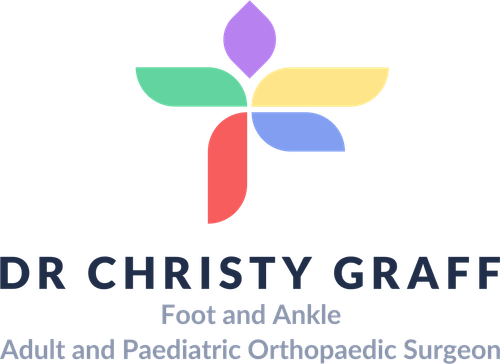Talus OCD Fixation Surgery
Talus OCD Fixation Surgery Information Sheet
Talus OCD Fixation Surgery
- The surgery involves looking inside the ankle with a camera (see Ankle Arthroscopy) and identifying the loose fragment and the ‘donor’ site.
- At this time, if the loose fragment has bone on back of it (i.e. it is not just cartilage), it will be deemed repairable while you are asleep, and will be fixed back to where it belongs.
- This involves making an incision over the ankle to fix the fragment back with screws that are usually absorbable.
- This can require cutting the tibia bone for access to the talus; this is then fixed back to the original position after the surgery.
The Hospital Stay
- You wake up with bulky bandages and a boot or a half plaster.
- You will stay in hospital overnight, with your foot elevated and you have will have antibiotics through a drip .
- You will blood thinners to prevent DVT and vitamin C to help with wound healing and pain management.
- You will be only allowed to touch your foot to the ground for 6 weeks.
- Depending on your balance and strength, you may need rehabilitation post operatively.
- Buying a second hand knee scooter pre operatively (can search online) and practicing at home before the surgery, can be helpful; please bring it into the hospital with you. It is easier to use a knee scooter than crutches
When You Go Home
- You will need medications for pain relief.
- You will need to take antibiotics until the wound heals.
- You will need blood thinners and vitamin C daily for 6-8 weeks.
- Please leave all dressings intact until your post op appointment.
- You will get an appointment for your post op appointment in 2-3 weeks where the dressings will be taken down.
- After this you will be able to shower normally and pat the dressings dry.
Rehabilitation
ALL patients are different. These timelines are only a guide, and some patients may progress faster or slower than others.
0-3 weeks
- You will be in a boot or half a plaster.
- You will only be allowed to touch your foot to the ground for balance.
- Elevate your foot on 3 pillows most of day.
- You will need to bag the leg for showers.
- Pain relief: Please take regular paracetamol with meals and before bed; you may need stronger pain killers as well, especially before bed.
- Please take antibiotics, blood thinners and vitamin C as prescribed.
3-8 weeks
- Post op appointment for a wound check.
- You can start removing the boot for seated showering and sleeping and physiotherapy.
- Physio for isometric calf strengthening, hip and knee strengthening and leg lifts, and active range of movement with physiotherapy.
8-12 weeks
- Post op appointment to assess range of motion.
- You can weightbear as tolerated in the boot.
- Physiotherapy for active and passive plantarflexion and dorsiflexion and static strengthening.
12 weeks
- You can wear normal shoes if you are able to fit into them (you may still have swelling).
- You can increase to all strengthening (but no jumping/landing/twisting) with physiotherapy.
6 months
- Continue strengthening and range of motion with physiotherapy.
- Light jogging can commence if there is minimal pain.
12-18 months
- When the leg feels back to normal and the same as the other leg, you can start sport specific training.
When Can I Return To Work/School?
- Seated work 8 weeks
- Prolonged standing 6-9 months
- Heavy labour work 12-18 months
When Can I Return To Sport?
- Start sport specific training at 12-18 months
- Return to sport when leg same as the other side
When Can I Drive?
- Left foot 2-3 weeks (if driving an automatic)
- Right foot 8 weeks
Talus OCD Fixation Surgery Risks
- Anaesthetic problems
- Nerve injury
- Blood clots
- Infection
- Stiffness
- Malunion or nonunion
- Fragment does not heal back
- Ongoing pain including chronic regional
- pain syndrome
- Further surgery
- Future arthritis
Contact Us
If you want more information or have any questions or problems, please contact Dr Graff at
admin@christygraff.com or call the rooms at
0493 461 133.

